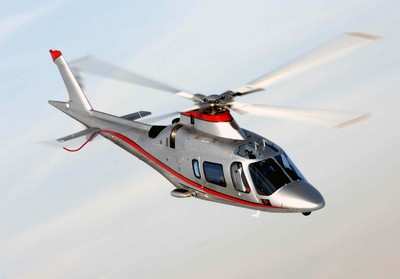Tue, Jul 05, 2011
Cites Department Policies As Contributing To The Fatal
Crash
In its probable cause report, the NTSB cites a New Mexico State
Police pilot's decision making as the primary cause for an accident
which fatally injured two and seriously hurt one. But the board
also has harsh words for the culture of the police department which
it says stressed mission execution over safety. The sure thing is
this rescue flight did not have a favorable outcome.

NTSB Identification: CEN09PA348
14 CFR Public Use
Accident occurred Tuesday, June 09, 2009 in Santa Fe, NM
Probable Cause Approval Date: 06/02/2011
Aircraft: AGUSTA SPA A109E, registration: N606SP
Injuries: 2 Fatal,1 Serious.
On June 9, 2009, about 2135 mountain daylight time, an Agusta
S.p.A. A-109E helicopter, N606SP, impacted terrain following visual
flight rules flight into instrument meteorological conditions near
Santa Fe, New Mexico. The commercial pilot and one passenger were
fatally injured; a highway patrol officer who was acting as a
spotter during the accident flight was seriously injured. The
entire aircraft was substantially damaged. The helicopter was
registered to the New Mexico Department of Public Safety and
operated by the New Mexico State Police (NMSP) on a public search
and rescue mission under the provisions of 14 Code of Federal
Regulations Part 91 without a flight plan. The helicopter departed
its home base at Santa Fe Municipal Airport, Santa Fe, New Mexico,
about 1850 in visual meteorological conditions; instrument
meteorological conditions prevailed when the helicopter departed
the remote landing site about 2132.

File Photo
The National Transportation Safety Board determines the probable
cause(s) of this accident as follows:
The pilot's decision to take off from a remote, mountainous landing
site in dark (moonless) night, windy, instrument meteorological
conditions. Contributing to the accident were an organizational
culture that prioritized mission execution over aviation safety and
the pilot's fatigue, self-imposed pressure to conduct the flight,
and situational stress. Also contributing to the accident were
deficiencies in the NMSP aviation section's safety-related
policies, including lack of a requirement for a risk assessment at
any point during the mission; inadequate pilot staffing; lack of an
effective fatigue management program for pilots; and inadequate
procedures and equipment to ensure effective communication between
airborne and ground personnel during search and rescue
missions.
More News
Also: B-29 Superfortress Reunion, FAA Wants Controllers, Spirit Airlines Pulls Back, Gogo Galileo Van's Aircraft posted a short video recapping the goings-on around their reorganiz>[...]
Light Gun A handheld directional light signaling device which emits a brilliant narrow beam of white, green, or red light as selected by the tower controller. The color and type of>[...]
"The journey to this achievement started nearly a decade ago when a freshly commissioned Gentry, driven by a fascination with new technologies and a desire to contribute significan>[...]
"Our driven and innovative team of military and civilian Airmen delivers combat power daily, ensuring our nation is ready today and tomorrow." Source: General Duke Richardson, AFMC>[...]
Aircraft Conflict Predicted conflict, within EDST of two aircraft, or between aircraft and airspace. A Red alert is used for conflicts when the predicted minimum separation is 5 na>[...]
 Airborne 04.16.24: RV Update, Affordable Flying Expo, Diamond Lil
Airborne 04.16.24: RV Update, Affordable Flying Expo, Diamond Lil ANN's Daily Aero-Term (04.20.24): Light Gun
ANN's Daily Aero-Term (04.20.24): Light Gun Aero-News: Quote of the Day (04.20.24)
Aero-News: Quote of the Day (04.20.24) Aero-News: Quote of the Day (04.21.24)
Aero-News: Quote of the Day (04.21.24) ANN's Daily Aero-Term (04.21.24): Aircraft Conflict
ANN's Daily Aero-Term (04.21.24): Aircraft Conflict




